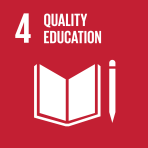-
Population ageing in east and south-east Asia, 1950-2050: Implications for elderly care
- Source: Asia-Pacific Population Journal, Volume 21, Issue 2, Jun 2007, p. 25 - 44
-
- 29 Jun 2007
Abstract
Following rapid fertility declines and sustained improvements in life expectancy during the second half of the twentieth century, most countries in East and South-East Asia entered the twenty-first century faced with the problem of population ageing. Population ageing, defined as the increasing proportion of older persons in the total population, is projected to progress in East and South-East Asia at rates higher than the average for the world and the less developed regions (LDRs). Among the various challenges arising as a result of the increasing proportion and absolute numbers of the elderly population, ensuring that older persons are provided adequate care is of paramount concern. A rising proportion of the older population relative to that of the active adult and working age population means that each worker will have to contribute towards supporting an increasing number of older persons. Also, given the declining family size, the number of caregivers available per older person will continuously decline. The implications of the growing imbalance in the demographic equation are further aggravated by increasing globalization, migration, the increasing preference for the nuclear family and, in some countries, the HIV/AIDS epidemic.





